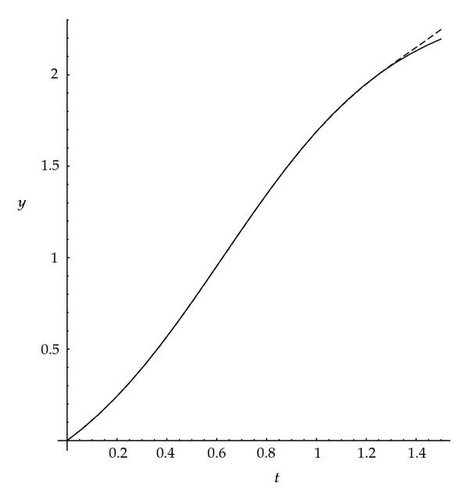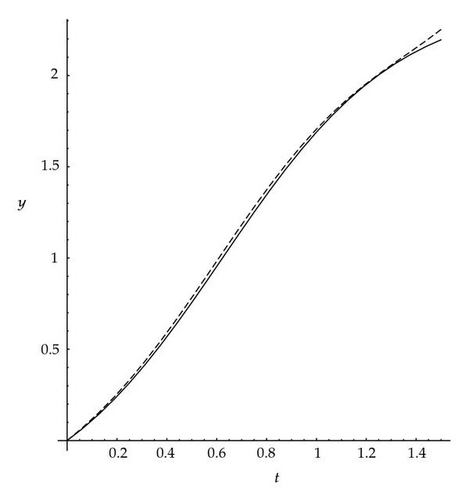He′s Variational Iteration Method for Solving Fractional Riccati Differential Equation
Abstract
We will consider He′s variational iteration method for solving fractional Riccati differential equation. This method is based on the use of Lagrange multipliers for identification of optimal value of a parameter in a functional. This technique provides a sequence of functions which converges to the exact solution of the problem. The present method performs extremely well in terms of efficiency and simplicity.
1. Introduction
The fractional calculus has found diverse applications in various scientific and technological fields [1, 2], such as thermal engineering, acoustics, electromagnetism, control, robotics, viscoelasticity, diffusion, edge detection, turbulence, signal processing, and many other physical processes. Fractional differential equations (FDEs) have also been applied in modeling many physical, engineering problems, and fractional differential equations in nonlinear dynamics [3, 4].
The variational iteration method was proposed by He [5] and was successfully applied to autonomous ordinary differential equation [6], to nonlinear partial differential equations with variable coefficients [7], to Schrodinger-KdV, generalized Kd and shallow water equations [8], to linear Helmholtz partial differential equation [9], recently to nonlinear fractional differential equations with Caputo differential derivative [10, 11], and to other fields, [12]. The variational iteration method gives rapidly convergent successive approximations of the exact solution if such a solution exists; otherwise a few approximations can be used for numerical purposes. The method is effectively used in [6–8, 13–15] and the references therein. Jafari et al. applied the variational iteration method to the Gas Dynamics Equation and Stefan problem [13, 14]. We consider here the following nonlinear fractional Riccati differential equation:
2. Analysis of the Variational Iteration Method
We consider the fractional differential equation
3. Applications and Numerical Results
To give a clear overview of this method, we present the following illustrative examples.
Example 3.1. Consider the following fractional Riccati differential equation:
The exact solution of (3.1) is y(t) = (e2t − 1)/(e2t + 1), when α = 1.
In view of (2.6) the correction functional for (3.1) turns out to be
In Figure 1, Approximate solution (y(t)≅y3(t)) of (3.4) using VIM and the exact solution have been plotted for α = 1. In Figure 2, Approximate solution (y(t)≅y3(t)) of (3.4) using VIM and the exact solution have been plotted for α = 0.98.


Comment 3. This example has been solved using HAM, ADM, and HPM in [16–18]. It should be noted that these methods have given same result after applying the Padé approximants on y(t).
Example 3.2. Consider the following fractional Riccati differential equation:
The exact solution of (3.4) is , when α = 1.
Expanding y(t) using Taylor expansion about t = 0 gives


4. Conclusion
In this paper the variational iteration method is used to solve the fractional Riccati differential equations. We described the method, used it on two test problems, and compared the results with their exact solutions in order to demonstrate the validity and applicability of the method.
Acknowledgments
The authors express their gratitude to the referees for their valuable suggestions and corrections for improvement of this paper. Mathematica has been used for computations in this paper.




